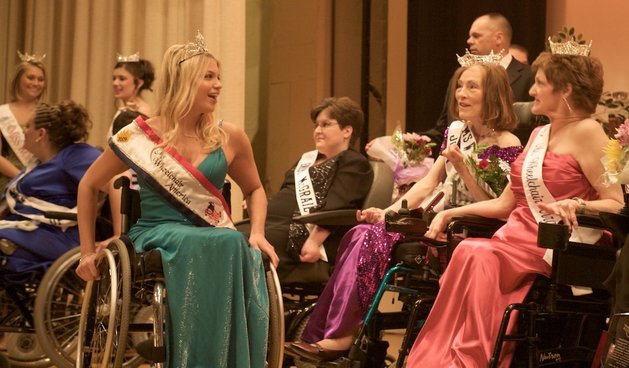YA reporter spearheads cinema campaign for better disabled access in the UK
Thursday, 01 September 2011
By Paul Peterson
A PRESSURE group has launched a campaign for cinemas to improve disabled access.
Members of the Muscular Dystrophy Trailblazers Group are calling for independent and multiplex cinemas across the country to provide better facilities for disabled customers.
Wheelchair users including YA reporter Paul Peterson, from Corringham, and Victoria Pegg, from Chelmsford, both have a form of the muscle-wasting disease and are leading the campaign in Essex.
Paul, 32, who has Becker Muscular Dystrophy, was mainly critical of the Empire Cinema at the Festival Leisure Park, in Basildon.
He argued that in recent years, the cinema’s disabled access had got worse.
He said: “The multiplex used to be excellent and was so good that I would sometimes make the trip back from university in Barking to go there.
“The wheelchair spaces were not restricted to the front rows so I could sit at the back with the rest of my friends.
“When the new premium seating was installed, the number of screens with wheelchair spaces at the back of the cinema was reduced.
“It means you have to sit right at front, which gives you a stiff neck and eye strain because it’s just far too close to the screen.”
Members of the Muscular Dystrophy Trailblazers Lights, Camera, Access? campaign recently carried out an investigation into disabled access at cinemas across the county.
They found that:
* One in three major cinema chains have bad or very bad views of the screen from the wheelchair accessible seating.
* More than half have uncomfortable accessible seating areas and one third have poor access between the ticket office and the auditorium.
* One in three of the major chain cinemas have bad or very bad disability awareness.
* Almost half of independent and major chain cinemas did not offer an online ticket service for the disabled.
* One in five major chain cinemas do not accept the Cinema Exhibitors Association discount card or offer another discount for disabled customers and a carer.
* Of the independent cinemas, 96 per cent have good or very good views of the screen from the wheelchair accessible seating area.
* Eight out of 10 independent cinemas have comfortable wheelchair accessible seating.
* More than 85 per cent of independent or small chains have easy or very easy access between the ticket office and the auditorium.
* Eight out ten independent cinemas have good or very good disability awareness.
Victoria Pegg, 27, who has Muscular Dystrophy, urged people to sign a petition which will be presented to cinema operators and MPs at Westminster later this year.
She said: “We want to work with cinema exhibitors to resolve some of these issues their disabled customers face.
“I hope people will back our petition and encourage cinemas to start putting a little more into the service they provide to their disabled customers.”
For more information about the group, or to sign the cinema access petition, visit www.mdctrailblazers.org

